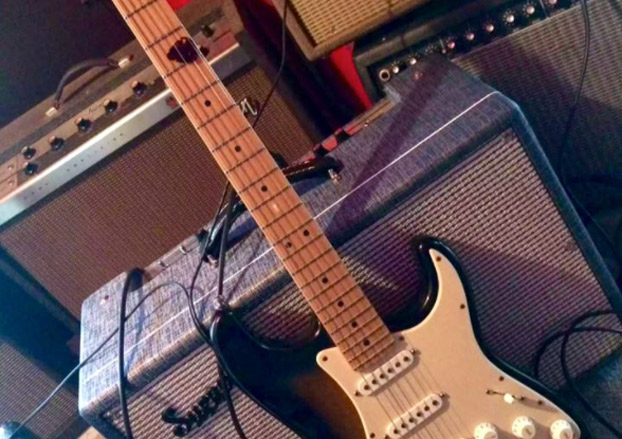How to buy a guitar amp: a guide for the first-time buyer

When shopping for a guitar amp, don’t take home the first one you plug into. Sure, that amp may feel really good to play, and you may love how it screams, but are you really going to be happy with it when you wake up tomorrow morning?
Here are 10 things you should know before you even consider handing over your money to the amp pimp.
01. BYOG
Bring your main guitar with you, even if you think the store stocks a similar model. An unfamiliar guitar may have a brighter sound than your personal ax, and an amp that sounded sparkly and lively in the store may actually be dull as Anne Heche on Quaaludes when you get it home.
02. Tube, Solid-State or Digital?
While tube technology is still considered state-of-the-art in countries where a potato is regarded as a square meal, these days solid-state and digital amps offer excellent tone for a lot fewer bucks, and with fewer maintenance headaches. However, tube tone is still considered the standard by many top players. Take a blind listening test, and let your ears be the judge.
03. Size Matters
Get The Pick Newsletter
All the latest guitar news, interviews, lessons, reviews, deals and more, direct to your inbox!
A 100-watt stack is overkill if you live in an apartment and need an amp only for home recording. Conversely, a 10-watt combo is woefully inadequate if you play in a band with a drummer named Thunder Fist. Choose an amp that’s right for your primary application. You’ll need at least 30 watts for playing live with a rock band, but smaller amps often provide surprisingly huge sounds in the studio—just ask Jimmy Page. Also, as a rule of thumb, if you're playing out often, you might want to shoot for at least 15 watts of tube tone.
04. The Sound of Power
Distortion is usually generated by three distinct sources: the power amp, the preamp and the speakers. Many players overlook power amp distortion when trying an amp, but the power amp section is the source of what guitarists describe as low-end chunk and balls. Audition the power amp by turning the master volume way up and turning down the gain. The sound should be lively, with a crisp attack that jiggles your trousers.
05. A Righteous Buzz
Preamp, or gain, controls (sometimes called “volume” on master volume–equipped amps) let you dial in impressive-sounding distortion at low volumes, but excessive preamp distortion can sound too compressed and sizzling at high volumes. Turn down the gain and crank up the master volume until the amp is set at the output level you’d normally play at. Now, slowly increase the gain until the sound becomes as distorted as you want it to be. If the tone is buzzy and lacks dynamics, the amp will have all the onstage presence of an American Idol reject.
06. Happ’nin’ Crunch
Overdriven speakers create one of the most desirable distortion characteristics: crunch. The best way to test for this is to dial in a clean setting and turn the volume way up. Low-wattage speakers break up at lower volumes, but they have a tendency to turn to mush at excessive volume levels; high-wattage speakers may not break up at all. Choose a speaker that sounds lively, defined and harmonically rich at volume and distortion levels you’ll normally play at.
07. More Talk About Speakers
While often overlooked, the speakers are an amp’s most crucial component—they’re the last thing standing between all that electronic gobbledygook and the sound that reaches your ears (except for yo’ mama’s fist, but that’s another story). Different sized speakers have different tonal characteristics, and you should consider speaker sizes the same way you’d consider an amp’s wattage rating. Speakers are like booty—small ones are tighter and big ones have more bottom end. But like a pair of pants, cabinet design can shape bottom end as well. Which is why a closed-back 4x10 cabinet may put out more bass than a 15-inch speaker in an open-back cabinet.
08. Channel Surfing
Multichannel amps are great for players who use a lot of different tones, but if all you want is a good clean sound and a good distorted sound, they may be more amp than you need. If you decide that an amp with three or more channels is right for you, look for one that provides separate EQ controls for each channel.
09. Twist Some Knobs
You should be able to dial in a sound you like quickly and easily. Adjust each tone control and note how they interact with each other. If it’s too hard to dial in a decent tone in the store, chances are you won’t be able to when you get the amp home or onstage.
10. Additional Features
While tone and volume should be your foremost considerations, you should also determine what extra features you really need. Built-in effects are great if you want a no-hassle, all-in-one package, but they may not be as flexible as external effects pedals and processors. An effect loop is useful for effects like digital reverb and delay, but it’s not essential if your effects consists of a few stomp boxes. Line outputs with speaker emulation are helpful for home recording, and external speaker outputs are great for expanding your live rig.
Bottom line: Don’t pay extra for features you’ll never use.
Chris is the co-author of Eruption - Conversations with Eddie Van Halen. He is a 40-year music industry veteran who started at Boardwalk Entertainment (Joan Jett, Night Ranger) and Roland US before becoming a guitar journalist in 1991. He has interviewed more than 600 artists, written more than 1,400 product reviews and contributed to Jeff Beck’s Beck 01: Hot Rods and Rock & Roll and Eric Clapton’s Six String Stories.





![John Mayer and Bob Weir [left] of Dead & Company photographed against a grey background. Mayer wears a blue overshirt and has his signature Silver Sky on his shoulder. Weir wears grey and a bolo tie.](https://cdn.mos.cms.futurecdn.net/C6niSAybzVCHoYcpJ8ZZgE.jpg)

![A black-and-white action shot of Sergeant Thunderhoof perform live: [from left] Mark Sayer, Dan Flitcroft, Jim Camp and Josh Gallop](https://cdn.mos.cms.futurecdn.net/am3UhJbsxAE239XRRZ8zC8.jpg)



